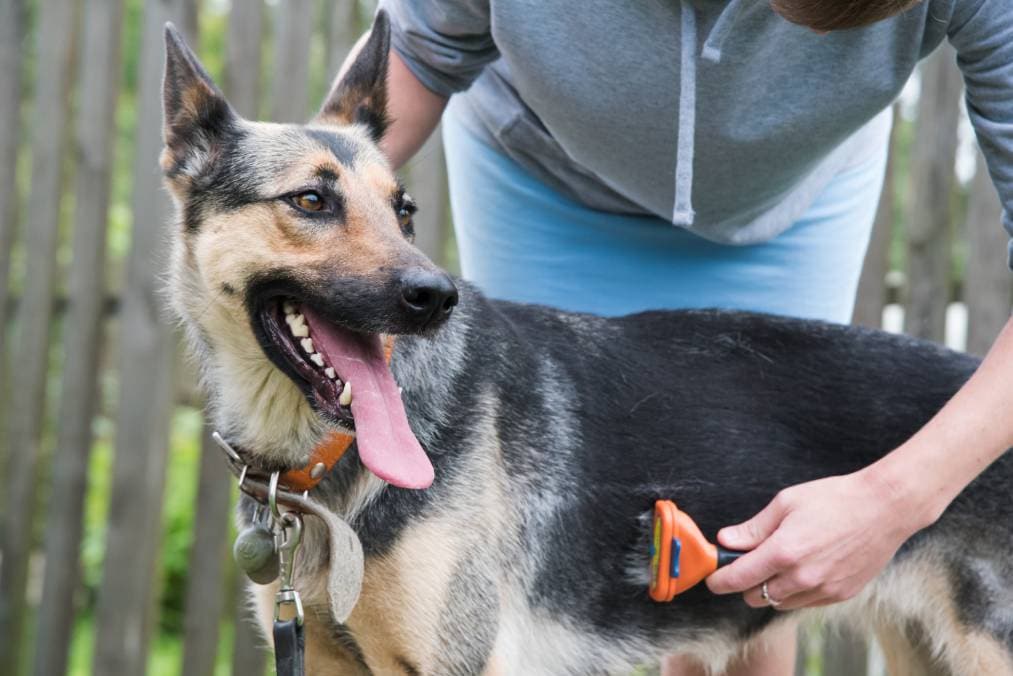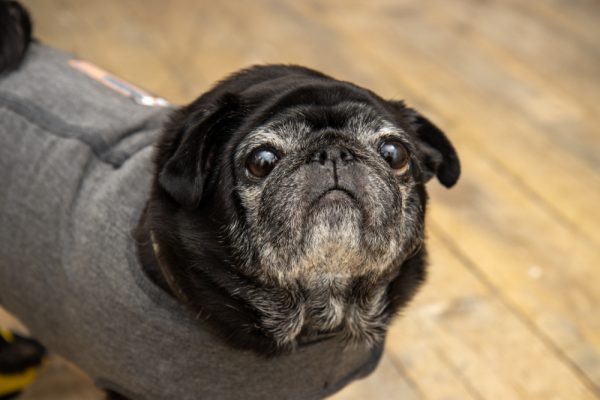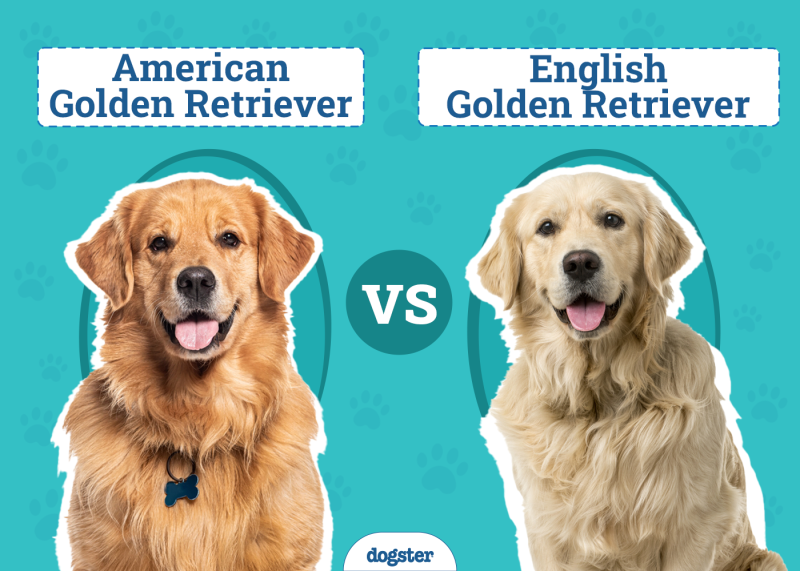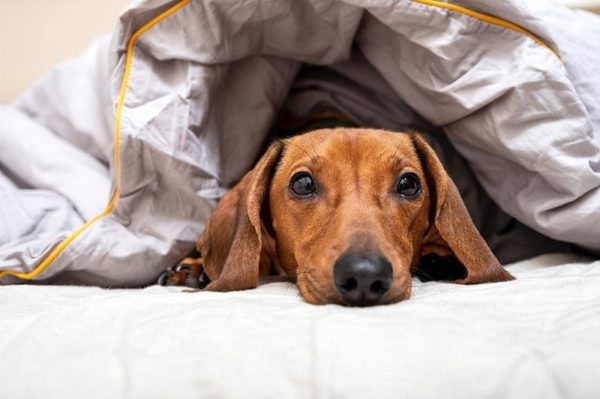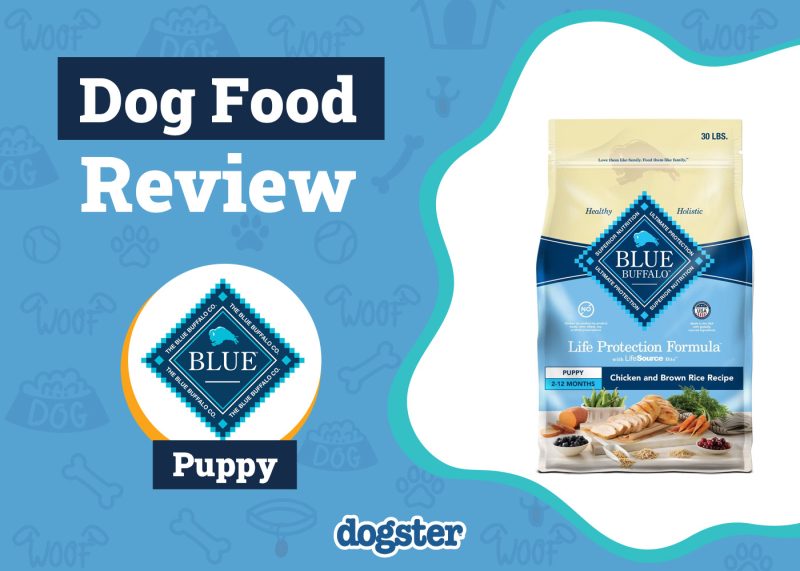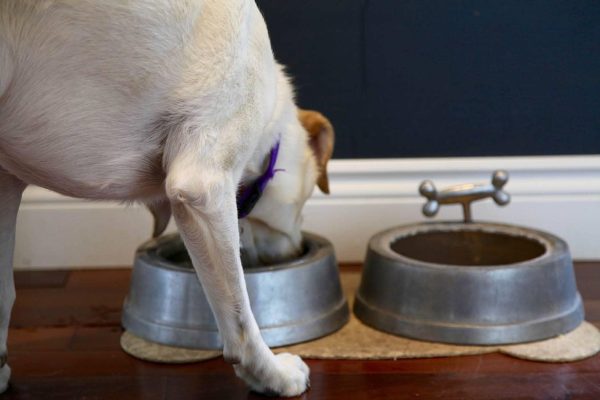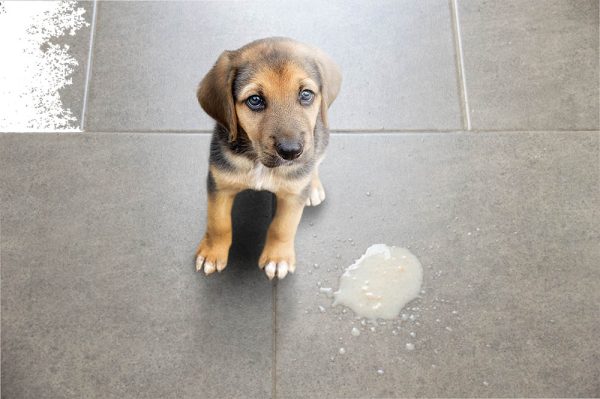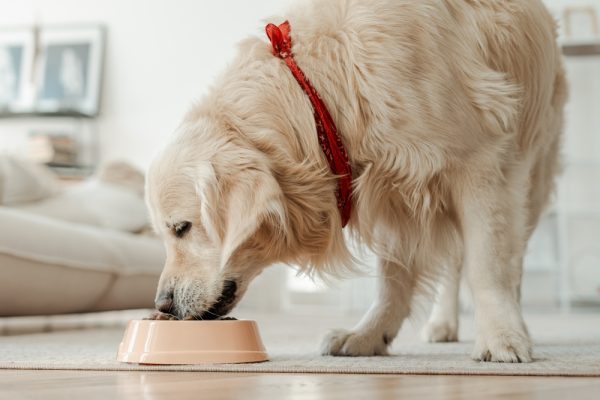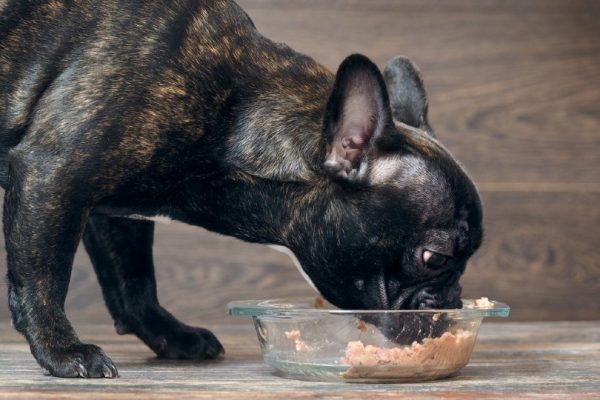In this article
You can spot a German Shepherd a mile away; the long, muscular body, large ears, confident gait, and dense, often black and tan-colored coats are dead giveaways. Some are curious about the German Shepherd’s beauty regimen, but the truth is that German Shepherd parents don’t need to do a lot to keep these magnificent dogs looking good.
Nevertheless, they do need to be groomed and there are some important things to know about how the German Shepherd’s coat contributes to these dogs’ health and wellbeing. Based on that, here are some tips and tricks for grooming a German Shepherd.

What You’ll Need:
- Pin brush or slicker brush
- De-shedding tool
- Dog shampoo
- Nail clippers
- Dog ear cleaning solution
- Toothbrush
- Dog toothpaste
Our 7 Tips for Grooming a German Shepherd
1. Never Cut or Shave the Coat
The most crucial rule of German Shepherd maintenance is to never cut or shave their coats short. Though some think it’s a kindness to shorten the German Shepherd’s coat in the summer months, this isn’t true.
The German Shepherd’s double coat naturally regulates their body temperature, both in summer and winter. In winter, the coat keeps them warm and in summer, it keeps them cool. In addition, if you shave the coat, it may not grow back the same way. Instead, you can lightly trim hair around certain areas (like the paws) to tidy things up if necessary.
2. Brush Every Few Days
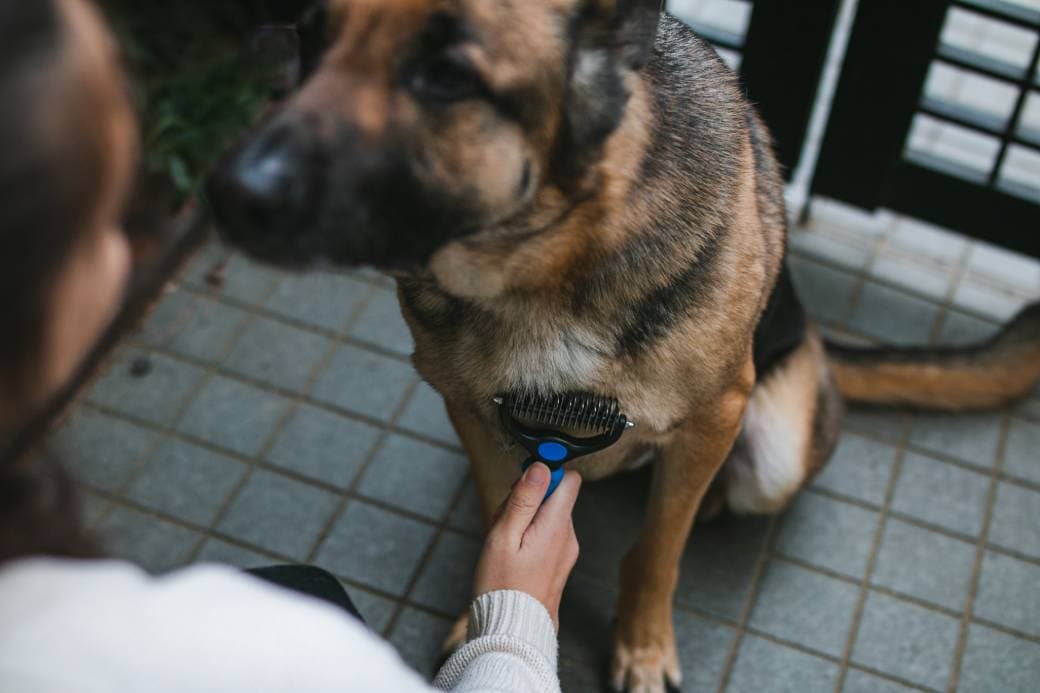
German Shepherds don’t need to be brushed much, but a brush every other day is ideal for keeping the coat in good condition. This distributes the natural oils from the skin around the coat and gets rid of loose or dead hairs in the topcoat. You can use a slicker brush or pin brush for general brushing.
3. Use a De-shedding Tool
Though German Shepherds don’t need much brushing as a rule, they do shed throughout the year, and the rate of shedding accelerates—a process known as “blowing” the coat—when shedding season rolls around. This happens because the German Shepherd has a double coat consisting of a harsh-textured topcoat and a short, soft undercoat that sits close to the skin.
For this reason, you’ll want to get a de-shedding tool in addition to a standard pin or slicker brush. Unlike regular brushes which take care of the top coat, de-shedding tools go deeper, gently removing the loose undercoat to prevent buildup and reduce the amount of hair that ends up around your home.
4. Go Easy on the Baths
Luckily for you, German Shepherds don’t need to be bathed very often. Bathing too frequently can dry out the skin and coat, which can lead to irritation and soreness.
Unless your vet has advised otherwise on medical grounds, a bath every 2–3 months should be just right as a rule, but this varies from dog to dog—after all, some dogs have a special affinity for a “lovely” mud bath (sigh) when out and about. Only use shampoo formulated for dogs when you bathe your German Shepherd, not human shampoo.
If you’re unsure of which puppy shampoo to use, please contact your vet or a reputable groomer for a recommendation.
If you need to speak with a vet but can't get to one, head over to PangoVet. It's our online service where you can talk to a vet online and get the advice you need for your dog — all at an affordable price!

5. Keep the Nails Trimmed
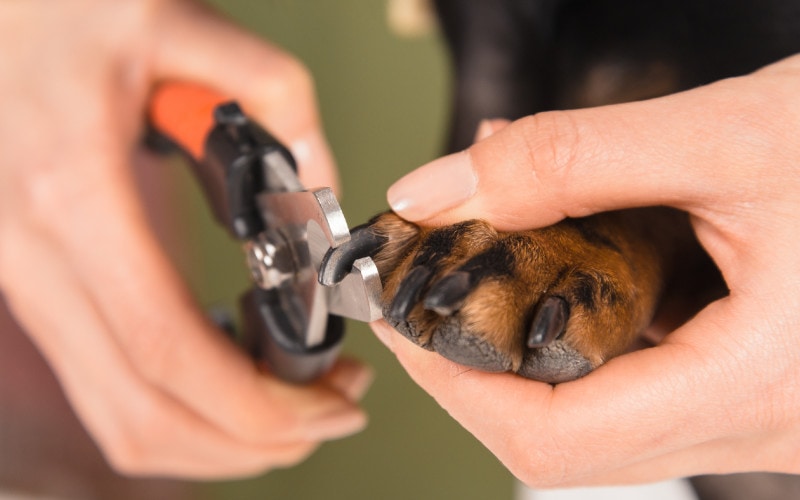
Nail trimming is just as important as coat care since overgrown nails are not only terribly uncomfortable but can even cause infections and problems moving around.
Check your German Shepherd’s nails every week to make sure they aren’t getting too long, and trim them as necessary. Walking outdoors regularly on concrete can help to wear the nails down naturally, but some dogs’ nails grow very fast.
6. Check the Ears Regularly
The ears are a hotspot for infection because dirt and debris can easily get into them. Have a look inside each ear once per week to check for excessive wax formation or any signs of infection and take your dog to a vet if you spot any. If you don’t see any signs of infection but the ears are dirty, you can clean them with a solution formulated for dogs. Don’t use cotton swabs as these can cause damage.
7. Brush the Teeth
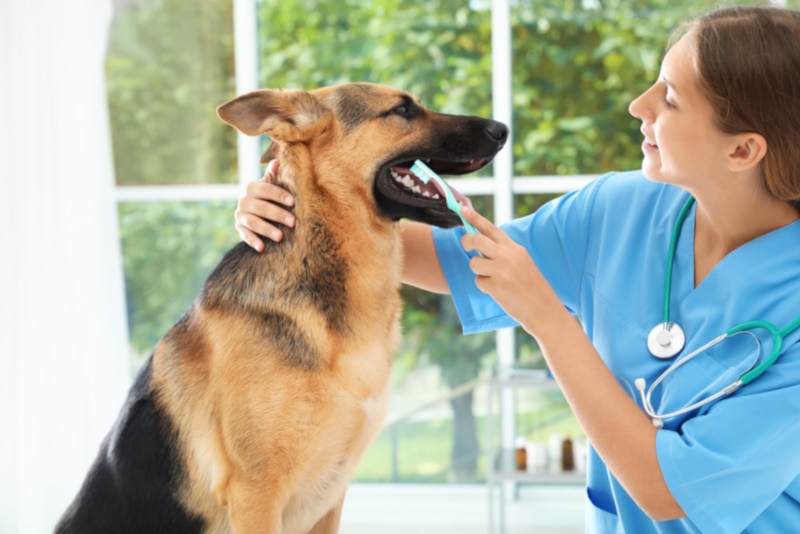
Brushing your German Shepherd’s teeth helps to prevent plaque buildup which can lead to periodontal disease. One idea is to buy a silicone finger toothbrush instead of using a stick brush, as this might be less intimidating for your dog. Alternatively, you can try finger wipes. From minty to beefy, you can get dog toothpaste in a variety of flavors but never use a human toothbrush, only dog-specific ones.
Start slowly by rubbing the teeth with your finger to help your dog get used to the feeling and let them taste some of the toothpaste. When they’re comfortable with this, start introducing the brush or finger brush. Never rush, as this is likely to stress your dog out.

Can My German Shepherd Get a Haircut?
With the exception of light trimming in the right areas (like the paw hairs, for example), a German Shepherd should never be given a haircut, even in summer. The German Shepherd’s double coat plays an important role in insulating the body, and, though it may seem odd, the coat protects them from the elements in the summer. Cutting the coat can damage this natural system.
Instead, in summer, focus on keeping your dog cool with access to a shady well-ventilated area, proper hydration, cool towels, icy treats, and cooling mats, and avoid walking them at the hottest times of the day.
Is It Okay to Shave a German Shepherd?
Unless a vet needs to shave an area for medical reasons, a German Shepherd should never undergo shaving for the same reasons mentioned above. They need their full coats for proper temperature regulation and losing the coat could not damage the texture and regrowth, but it could also leave them open to health conditions.
Can I Stop My German Shepherd from Shedding?
Shedding is just part and parcel of being a German Shepherd, and there’s no way to stop it, we’re afraid, but there are ways to keep it under control and stop things from getting out of hand.
A good de-shedding tool will help you deal with the (literal) fallout. If you can, it’s a good idea to brush and de-shed your German Shepherd outdoors to minimize the hair in your home. A high-quality diet is also important because dogs that don’t get all the nutrients they need are more prone to excessive shedding.
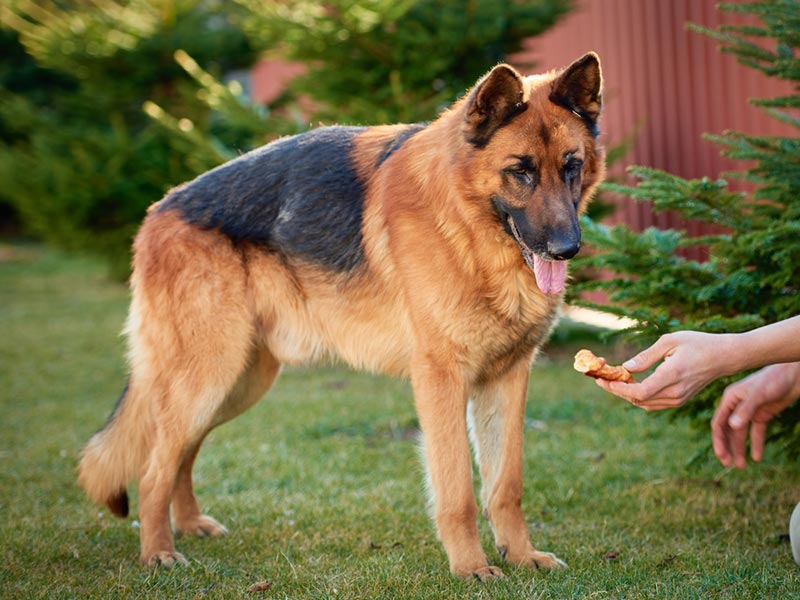

Conclusion
Fortunately, allowing your German Shepherd to flaunt their natural beauty (of course, with a little help from you in terms of brushing, de-shedding, and basic grooming routines) is all that’s needed to keep them looking gorgeous.
German Shepherds have no need for fancy haircuts (and shouldn’t have them due to the coat’s role in temperature regulation) and excessive pampering; as long as all the bases are covered, you’ll have both a stunning and happy canine companion.
See also:
- Do German Shepherds Bark a Lot? How Much & How to Stop It
- How Often Should You Bathe a German Shepherd? Vet-Verified Grooming Guide
Featured Image Credit: Karpova, Shutterstock

